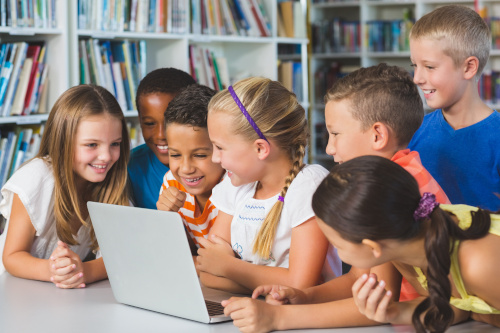What are inclusive learning environments, anyway? Putting a definition on this complex concept is deceptively tricky. Environments aren’t just spaces that we exist in; they also encompass the culture in that space. Here’s how I define it:
An inclusive environment is a place where I can see myself, where I’m represented as a human being—and as a learner. It’s a space that feels as if it were designed specifically for me, where I know my voice will be heard and respected.
The pandemic exacerbated inequities in education, but it also put a spotlight on them. Instead of returning to the “normal,” pre-pandemic version of school, I propose that school, district, and classroom leaders take this opportunity to shape a new system—one that’s effective for every student.
To create inclusive learning environments, educators can leverage the principles of Universal Design for Learning (UDL).
What is Universal Design for Learning?
UDL is not another program that teachers have to shoehorn into their already-crammed day–rather, it is a process and framework to help educators ensure they are reaching all learners. Think of UDL as an operating system, of sorts, for your classroom, school, or district. The goal of this system is deceptively simple: make education work for as many students as possible.
Applying UDL in the classroom
To effectively use the UDL framework, educators musttake time to self-reflect, consider what barriers exist, and what changes can be made to remove them.
This can be as simple as letting students choose from a variety of formats for lessons and assignments so that each can learn new content and show what they know in optimal ways. For example, learners could have the option to write an essay or choose to present it orally. Students could decide whether they’d like to read that day’s material from the textbook, or view a video summarizing the content.
A more thorough example of applying UDL in the classroom comes from a group of first-grade teachers. When the teachers needed to create a new writing lesson, they used journey mapping to put themselves in their students’ shoes and brainstorm ways to make it inclusive and relevant for every learner.
After outlining every part of the lesson on sticky notes, the teachers identified potential barriers and adjusted their learning methods and materials as needed. Later, when the teachers taught the lesson, they agreed it was the most successful one they had ever presented.
Alleviating “initiative fatigue”
It’s important to note that UDL is a process and mindset, not an off-the-shelf program or initiative—a way of thinking about lesson design rather than a “to-do” list.
Even before the pandemic, educators were dealing with initiative fatigue—adding “one more program” or implementing “one more platform”—without considering how it would impact staff and students.
UDL isn’t one more thing. It’s an iterative process of “plan, try, reflect”:
- Plan as intentionally as you can, with the variability of students (and staff) in mind
- Try it out
- Reflect on what worked, what didn’t, and what could be done differently next time
The beauty of this process is that it’s flexible. The UDL framework can help teachers shape inclusive learning environments, support K-12 leaders in implementing a new program, or even help guide a professional learning opportunity.
One step at a time
Just remember, while the first-grade lesson mentioned earlier was a success, teachers can learn a lot from those that don’t succeed. My advice: don’t let the idea of perfection get in way of trying something new. Involve students in the process, welcome their opinions and celebrate their differences—that’s how you create a learning environment that is truly inclusive.
- 3 ways to avoid summer learning loss - April 19, 2024
- High school students say AI will change the workforce - April 18, 2024
- Motivating students using the Self-Determination Theory - April 17, 2024


